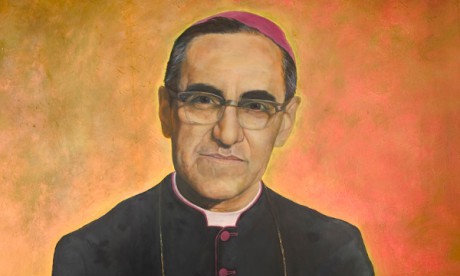The beatification of martyred Archbishop Oscar Romero on May 23 will acknowledge what has been celebrated throughout Latin America since his assassination at the altar on March 24, 1980, in El Salvador.
Romero gave his life as a good shepherd for his flock in a time of persecution. He modeled what a bishop looks like in a church committed to justice for the poor.
Romero’s death and the baptism of blood endured by the people of El Salvador during its 12-year civil war (1980-92) inevitably have larger implications for the universal church, and for us in North America.
Pope Francis’ determination to advance Romero’s cause for sainthood recognizes this witness.
It also reveals the influence Romero is having on Francis’ own goal as pope — to move the global church closer to the kind of church that emerged in El Salvador under Romero, whose story is a road map to such a church.
This article explores some of its characteristics: a church faithful to the reforms of the Second Vatican Council, fully engaged in the modern world and its economic and social struggles; a pastoral church reaching out to the suffering and neglected people at the margins of society; a more vocal and prophetic church challenging global systems that oppress and exploit the poor; and an evangelizing church that practices what it preaches and lives what it prays.
A Vatican II church
Archbishop Vincenzo Paglia, chief advocate for Romero’s cause, called him “a martyr of the church of the Second Vatican Council.”
Romero’s choice to “live with the poor and defend them from oppression” flowed from the documents of Vatican II and of the 1968 meeting of Latin American bishops at Medellin, Colombia.
It was at Medellin that the phrase “God’s option for the poor” first entered official church language, a major shift at a time when the Catholic hierarchy in Latin America was seen by many as aligned with the rich and powerful. Continue reading
Sources
Additional readingNews category: Features.




